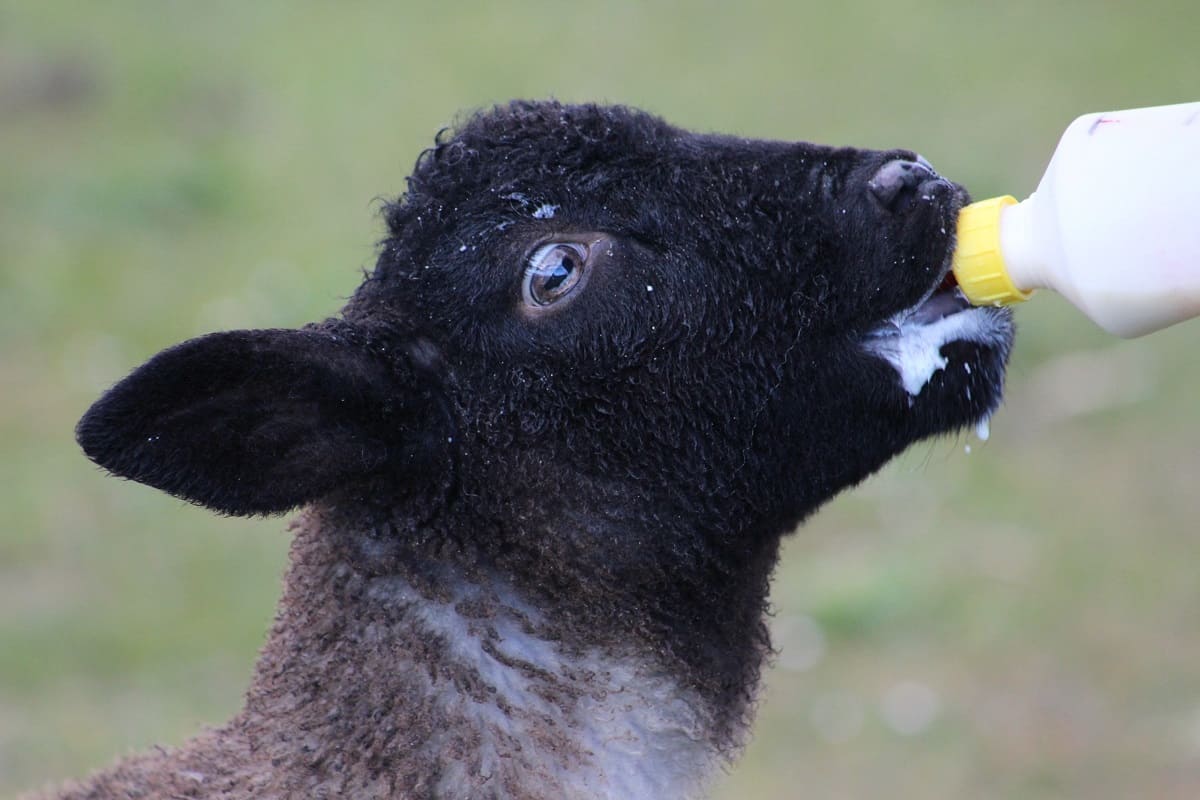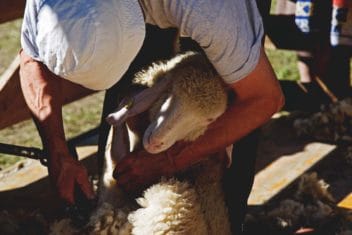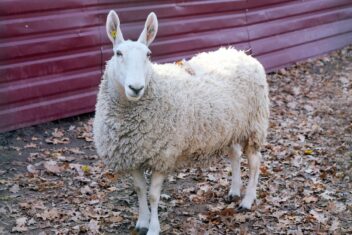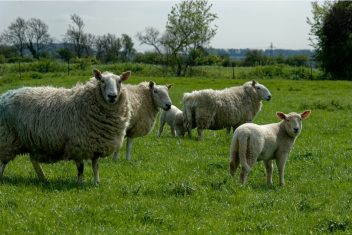When I think back to last January, I picture my husband and I standing in the aisle of our local feed store, mulling over a rack of supplements and supplies.
“Do you really think we need to?”
“I’m not sure.”
“Well, it’s better to be safe than sorry.”
At the time, we were trying to decide whether we really needed to pick up lamb milk replacer, colostrum, and bottles. Ultimately, we chose to purchase a few bottles and one container of each (milk replacer and colostrum) to have on hand. We had never had to bottle feed lambs in the past, but for whatever reason, we felt compelled to stock up just in case.
Thank goodness we did! We had to bottle feed several lambs that were born last spring, and without having the supplies on hand when we needed them (in the middle of the night and first thing in the morning) we would have been in quite a pickle!
Bottle feeding isn’t always necessary. In fact, more often than not, you can allow nature to take its course. You will have to do very little to feed your young sheep besides to allow mama to take over for herself. That said, it’s important to know how to bottle feed a lamb so that you can be prepared when an emergency arises.
When is Bottle-Feeding Necessary?
1. Death or Illness of Mother
There are several situations in which a lamb might need to be bottle-fed, but one of the most heartbreaking is when the mother has died or is suffering from an illness. Usually, this is related to lambing and its related traumas.
As the shepherd, you must be alert during the lambing process so that you can tend to a newborn lamb immediately. It is important that a young lamb have the ability to nurse immediately not just for food, but also to help get its body temperature up.
2. Lamb Health Problems
A newborn lamb might have trouble nursing from its mother if it is born very weak or with certain health problems. Usually, these aren’t so severe that its mother can’t encourage it to nurse.
However, you may find it necessary to bottle feed in some cases because you need to get it into a warm environment where it won’t have any other distractions or competition for food (in the case of multiple births).
3. Mother Rejects Lamb
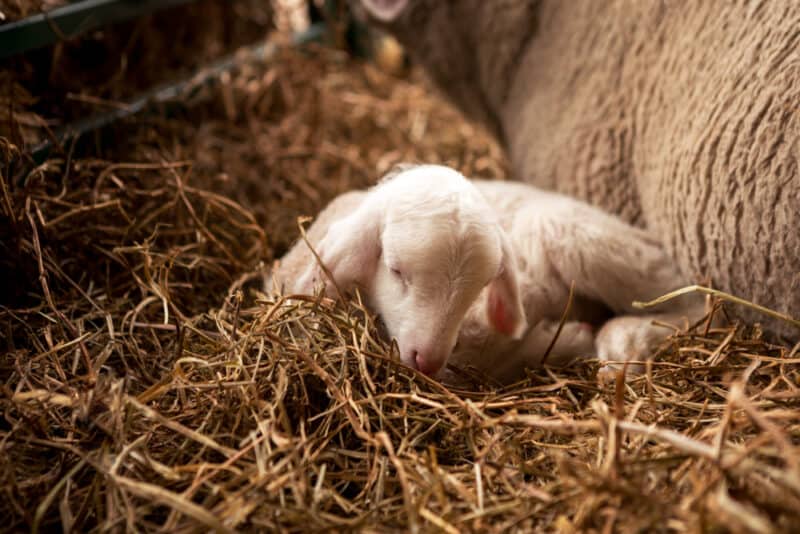
There are several reasons why a mother might reject her lamb. Normally, it has to do with trauma at lambing or poor mothering instincts (though this latter reason is far less common).
Either way, when a mother rejects her lamb, you have two options for how to rectify the situation. You can try to graft the lamb to another ewe (very challenging!) or you can bottle feed the lamb (more time consuming, but not as challenging).
4. Poor Milk Production (or Not Enough for Multiples)
Ewes can usually produce more than enough milk for their lambs, even in the case of multiple births. However, some breeds are known to give birth to twins, triplets, quadruplets, or more – and sometimes, there’s just not enough milk to go around. Certainly, there are not enough teats. In this case, bottle feeding will be necessary.
5. Temporary Solution
When we had to bottle feed one of our newborn lambs this spring, it, fortunately, was only a temporary solution. We didn’t have to bottle feed for long.
We fed him for 2 days until his mother had recovered enough from the trauma of birth and until we had figured out the teat problems that were making it difficult for her to nurse her young. You may find yourself in a similar situation.
Tips for Bottle Feeding a Lamb
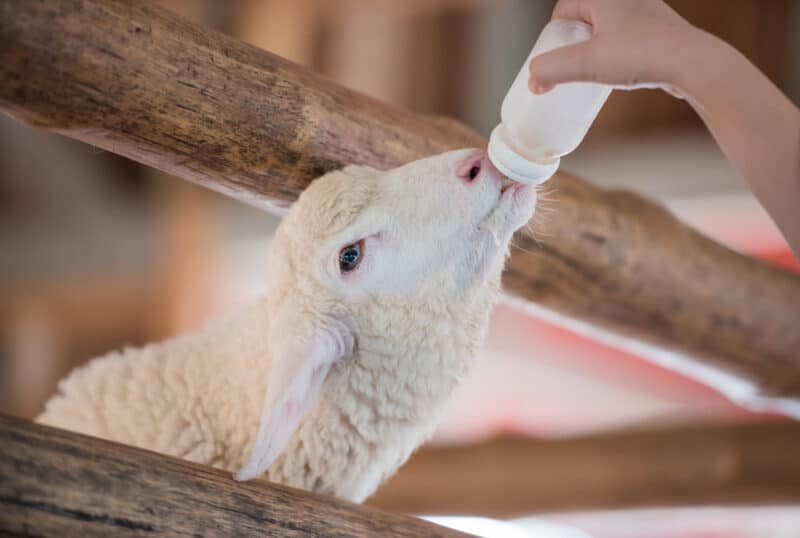
1. Start With Colostrum
If it’s at all possible, let the lamb nurse its mother for at least 24 hours to receive colostrum. Colostrum has antibodies from the mother that will jumpstart a lamb’s immune system. It is also high in proteins, vitamin A, and other nutrients, and it has a laxative effect that will help the lamb repel its first stool.
Lambs need to receive at least 10% of their body weight from colostrum after birth. I recommend keeping some on hand at all times in case of an emergency. Although it’s sold at most places that sell feed, those places might not be open at all hours of the day and night when you’re likely to need it most.
2. Get the Right Bottles
Although you can probably get by with any kind of bottle you happen to have on hand, it’s recommended that you choose one that can hold 8-ounces and be equipped with a rubber nipple. These aren’t expensive, so you may have to invest in a couple so you always have a spare.
3. Make Sure You Only Use Lamb Milk Replacer
When you’re figuring out how to feed your bottle lambs, only lamb milk replacer will do. Some people use calf milk replacer and while this might get you by in a pinch, it’s not ideal. Yes, it is less expensive and more readily available than lamb milk replacer, but it doesn’t have the fat, protein, and calories that orphan lambs need.
Some homemade lamb milk replacer options are touted all over the internet, too, but again, I would not recommend these. You’re better off to spend the extra money on “the real deal” so you don’t have to worry about your lamb falling victim to disease or malnutrition.
Pay close attention to the instructions on your package of milk replacer to find out how to mix it. You may need to do some conversions (for example, milliliters or cc’s to ounces).
4. Know How Much to Feed – and How Often
Ideally, you should try to get at least 2 cups of colostrum into the lamb within the first 24 hours. Then, you will need to feed about a third of a cup 4-6 times per day, typically at 4-hour intervals, for the next 3 days.
Once your lamb is about 4 days old, you can drop a feeding or two and just increase the amount that you feed the lamb at each interval. Watch the lamb for cues – I’ll discuss these in a moment. After 2 weeks, your lamb only needs a cup of milk replacer 3 times a day, and you’ll eventually be able to drop it down to milk replacer just twice a day until it’s ready to be weaned.
After a week or so, you can add fresh water and hay (or grass, if there’s any available when your lambs are born). These don’t need to be fed at a certain ratio but instead offered free choice. Your lambs will help themselves when they are ready.
5. Watch for Signs of Starvation and Dehydration
First and foremost, don’t overfeed your lamb. In most cases, it’s better to leave your lamb a little hungry than to allow it to get overfull. A sure sign that you have fed too much is a pot belly on the lamb.
If a lamb is underfed, you’ll notice that it is lethargic and failing to gain weight. It will have a belly that feels sunken in. A well-fed and hydrated lamb will have sides that are completely straight from the rib to the hips.
Underfed lambs are frequently hypothermic, too. In the beginning stages of hypothermia, a low body temperature and a hunched appearance are signs that you need to intervene.
6. Follow Proper Hand Placement
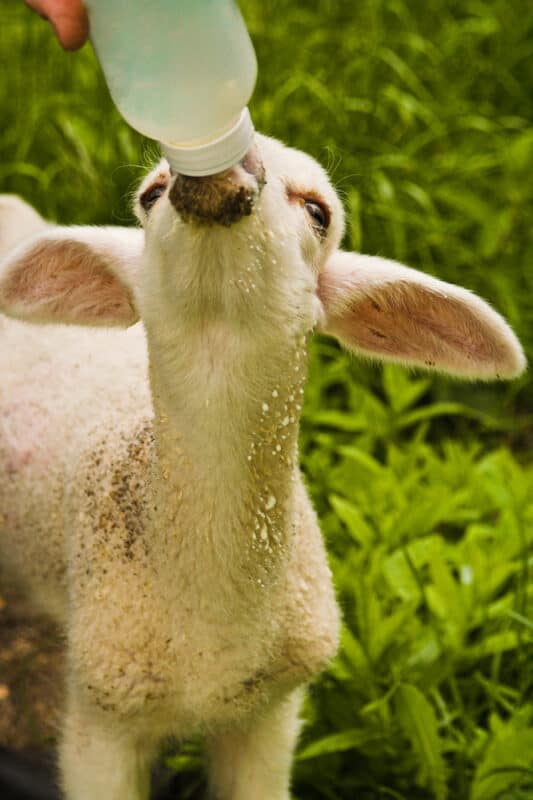
To feed your lamb, hold her head up, and let her stand. She should suckle freely. Try not to hold or cuddle the lamb while you are feeding her, as this could lead to digestive issues or even a clot in the lung. Most lambs will suckle instinctively, but if you can’t get yours to do so, you can try pressing the nipple against her lips. You can also tickle her beneath the chin.
7. Give Breaks
Bottle feeding can be overwhelming for a lamb. Don’t be afraid to give the little guy (or gal) time to acclimate. Provide frequent breaks to let him catch his breath.
8. Clean the Bottles
After feeding, rinse your bottle with warm water. Flip the bottle upside down so that milk or water doesn’t collect in the bottle and develop mold. Rinse the nipple and store it in a similar fashion. You don’t need to use soap (and especially not bleach) when cleaning your nipples. You also should avoid boiling them in hot water.
9. Tubing the Lamb
In very rare cases, it may be necessary to intubate a lamb to feed it. This is a common practice only when the lamb is too weak to suck a bottle. To do this, you will need to insert a flexible rubber tube into the lamb’s stomach by way of his throat (and via an attached syringe).
10. Keep the Lamb with the Rest of the Flock
If you can, try to keep your bottle-fed lamb housed with the rest of the flock. This will encourage natural behaviors and prevent conflicts that may arise later on when it is reintroduced.
Don’t Give Up
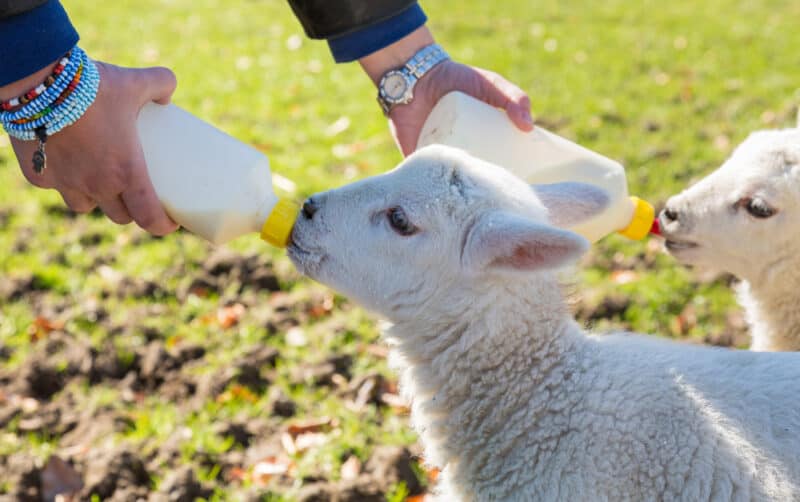
The most important tip you can follow when learning how to bottle feed a lamb is to not give up.
When my husband and I found ourselves bottle-feeding our first lamb, I also happened to be pregnant with our first child. The irony of the situation was not lost on us. We knew that we would be feeding our own little one in just a few short months.
Because of this, we recognized the importance of being tenacious. We committed to not giving up the first, second, or third time a lamb refused a bottle. The lamb needed to eat – and so we needed to learn the ropes.
When you’re learning all about bottle feeding lambs, be patient with yourself, and keep practicing. With time, it’ll come just as naturally to you as any other skill you’ve mastered on your farm or homestead.
